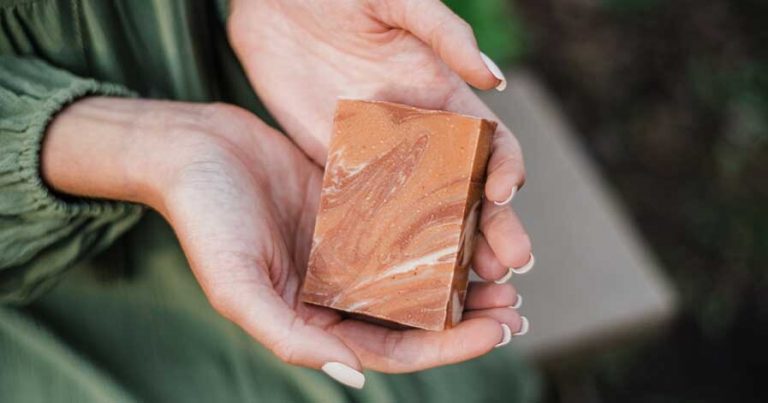Rejuvenate Your Handwashing Routine — Make Your Own Soap!
How to Make Your Own Soap
If you like to make your own makeup products, like hair masks, body lotions and face scrubs, you should try making your own soap using only natural ingredients. From preparation, to essential steps to take, here is how to make your own soap. Making your own allows the freedom to create various shapes, colors and fragrances. You can add fresh flowers and other ingredients to make it look more attractive, using it for yourself or as a gift to your friends.
How to Make Soap
Saponification or soap-making process requires two main ingredients: a base and an acid along with glycerine. Sodium hydroxide, or lye, is the main ingredient used. It is a caustic chemical that kills germs and washes off the dirt effectively. But it would be best if you handled it with care using suitable precautions to prevent getting your skin burned, respiratory issues and burning eyes. Alternatively, you can choose to buy a soap base, melt it, and add various fragrances, colors and flowers to it.
What Are the Safety Tools Required?
- Goggles: to cover the eyes from the foaming lye.
- Long-sleeved rubber gloves: to mix various ingredients.
- Digital scale, thermometer and measuring containers: to measure the right number of components and maintain the right temperature.
- Heat-proof pitcher and mixing bowl: they are necessary to mix lye and water. They are also needed to mix oil, butter and wax combinations.
- Silicone soap molds and immersion blenders: use various shaped molds to create unique soap designs and sticks, or use blenders to stir the soap mixture constantly.
How to Prepare a Soap Base
Choose any oil of your choice, like coconut, almond oil, olive oil and any butter, such as cocoa butter, soy wax, or beeswax. Add zinc oxide and arrowroot powder to make the soap opaque and creamy. These ingredients mixed with vegetable glycerine are a must for making any soap base.
Apart from these, many other ingredients like oils, fragrances, color, clay, herbs and flowers are necessary to make it special.
Soap-Making With Lye
The base must be made with approximately 60 to 65 grams of lye for all kinds of soap. The quantity can vary based on the other ingredients added. So, use an online lye calculator to determine the right amount of soap or get the correct measurement from the recipe you are trying.
Heat the required amount of water in a huge stainless-steel pot and add lye into it. Wear your safety goggles, gloves and a mask to ensure you properly handle the volcano-like foams. Stir continuously with a stick for 10 minutes until the lye is completely dissolved and set it to cool.
Melt the required butter, oils and soy wax or beeswax in a heatproof crackpot on another stove. Let them blend appropriately for around 20 minutes and dissolve in each other without lumps.
Pour the lye solution with the oil, butter and wax mixture and cook it for over 45 minutes. Stir after 15 minutes, adjust the temperature and keep cooking it constantly. Add arrowroot powder or zinc oxide after 45 minutes along with the required amount of glycerine (preferably 15 ounces), and let it cook for another half an hour. Once the soap gets cooked thoroughly, pour it into a silicone mold lined with butter paper and freeze it for a day.
How to Make Your Soap Unique
Cut the base into various shapes and sizes once it is out of the freezer. You can make it medicinal or extra special by melting it further on a hot pot. You can melt it using the double-boiler method to heat the soap base or microwave it for a minute to melt it quickly.
Double-Boiling Method
Boil water on a pan and place a glass bowl on top, filled with the finely cut cubes of the pre-made soap base. The base will melt gently in a few minutes, coming to a compliant stage to add colors and fragrant oils. Mix the oils and colors and whisk briskly until you like the smell and look of the soap.
Microwave
Place the glass bowl filled with chunks of soap base into the microwave for a minute or two to melt it thoroughly and take it out. You can use stains of natural vegetables for colors and essential oils for fragrance.
Pour the semi-solid soap into the silicone mold again, and add glitter, flowers, or extra colors. Then, add another layer of soap. Let it cool for a day and cut it as per your requirement, as most people create soaps in huge cylinders or square boxes and cut them using various cutters. Alternatively, you can use different shaped molds too. Stir the color with a toothpick like a swirl shape to create a lovely marble effect.
How to Make Soap Medicinal
Add the required ingredients with the water mixed with lye, like aloe water, goat milk, or milk powder. You can also add chemicals to make germ-free soaps or natural ingredients, like turmeric or neem with the water you mix with the lye. Powders of various herbs can also be added to the melted soap base while adding the fragrance or color. But they will be extra potent if these ingredients are added to the base as it is infused well in the saponification process and will benefit the user until the last bit of.
Making Soap Without Lye
Buy a soap base from an organic store and follow the remaining steps by melting the base and experimenting further. Alter the zinc oxide and arrowroot powder quantity to vary the creamy consistency and increase or decrease the soap transparency. Use different shapes, letters and layered colors to make it unique and personal. It is better to let the soap airdry for around five weeks before getting it sealed and packed. If you see it sweating, wipe it off with a tissue and let it sun-dry for a few days to make it last for months.
Soap-making is an exciting art, and there are hundreds of recipes available on the internet to try. The basic process is the same, though different types of butter, oil and fragrances get used. Get your hands dirty (technically clean) to unleash your creativity, making your own soaps that are healthy and chemical-free.

